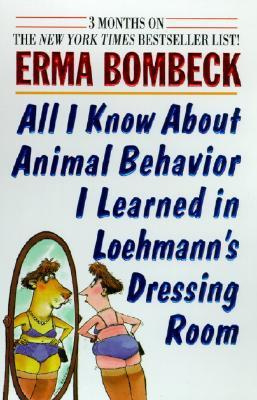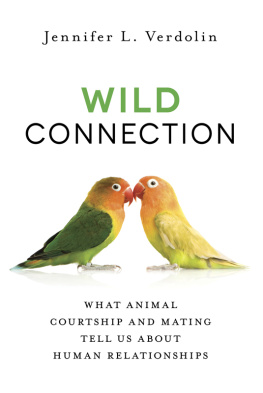Bombeck - All I know about animal behavior I learned in Loehmanns dressing room
Here you can read online Bombeck - All I know about animal behavior I learned in Loehmanns dressing room full text of the book (entire story) in english for free. Download pdf and epub, get meaning, cover and reviews about this ebook. City: New York, NY, year: 1996, publisher: Diane Pub Co;HarperCollinsPublishers, genre: Detective and thriller. Description of the work, (preface) as well as reviews are available. Best literature library LitArk.com created for fans of good reading and offers a wide selection of genres:
Romance novel
Science fiction
Adventure
Detective
Science
History
Home and family
Prose
Art
Politics
Computer
Non-fiction
Religion
Business
Children
Humor
Choose a favorite category and find really read worthwhile books. Enjoy immersion in the world of imagination, feel the emotions of the characters or learn something new for yourself, make an fascinating discovery.
- Book:All I know about animal behavior I learned in Loehmanns dressing room
- Author:
- Publisher:Diane Pub Co;HarperCollinsPublishers
- Genre:
- Year:1996
- City:New York, NY
- Rating:4 / 5
- Favourites:Add to favourites
- Your mark:
All I know about animal behavior I learned in Loehmanns dressing room: summary, description and annotation
We offer to read an annotation, description, summary or preface (depends on what the author of the book "All I know about animal behavior I learned in Loehmanns dressing room" wrote himself). If you haven't found the necessary information about the book — write in the comments, we will try to find it.
Identifying the likenesses between animals in the wild and human beings, another humorous reflection of the ridiculous side of life pokes fun at nutrition, talk shows, childbirth, and more. 500,000 first printing. $300,000 ad/promo.
From Publishers WeeklyWhen syndicated newspaper columnist Bombeck compares gorillas show-off behavior to the attention-getting ploys of Madonna, Howard Stern, Roseanne and other professional exhibitionists, one feels she may be onto something. Although many of these 38 lighthearted pieces, which seek out loose parallels between Homo sapiens and the rest of the animal kingdom, dont click, those that do are irreverent, funny and sassy, like her put-down of the mens movement or her survey of sex in the 1990s. There are several awful groaners here, as when the bestselling humorist leaps from the cockroachs eons-old longevity to the longevity of Christmas fruitcake. A lot of her animal-based observations on humans mating and courtship habits, emotional makeup and struggle for survival are superficial. Nevertheless, fans will enjoy Bombecks wry comments on toilet-training toddlers; mens superiority complex about driving a car; womens dieting and compulsion to hoard things; and how to encourage creative play in children. $300,000 ad/promo; Literary Guild and Doubleday Book Club selections.
Copyright 1995 Reed Business Information, Inc.
Bombeck carries on in the best tradition of Bombeck with her latest collection of short, humorous, piercingly accurate looks at the human condition. This time around, she leads off each essay with an observation of the animal kingdom. For example, Bombeck lets us know about the female African elephant, whose gestation period is 660 days and who nurses her newborns (300 pounds with stretchmarks no less). From there she launches into an account of human pregnancy, covering such areas as frozen embryos. She writes, It gives new meaning to the question, Daddy, where did I come from?. You were thawed in Milwaukee, son. Bombeck is a perennial favorite, and theres no reason to think that this wont be in as much demand as her last 11 books.
Carol Spielman Lezak, General Learning Corp., Northbrook, Ill.
Copyright 1995 Reed Business Information, Inc.
Bombeck: author's other books
Who wrote All I know about animal behavior I learned in Loehmanns dressing room? Find out the surname, the name of the author of the book and a list of all author's works by series.

















